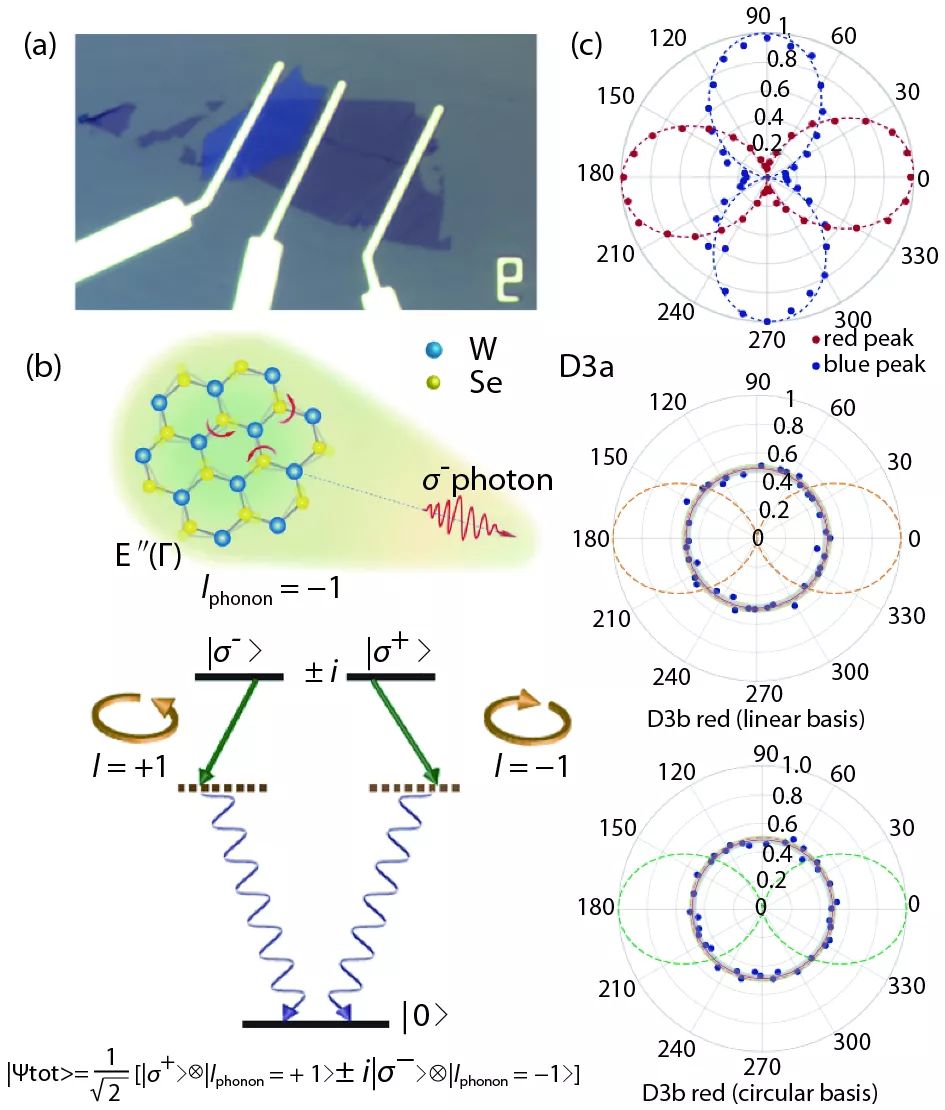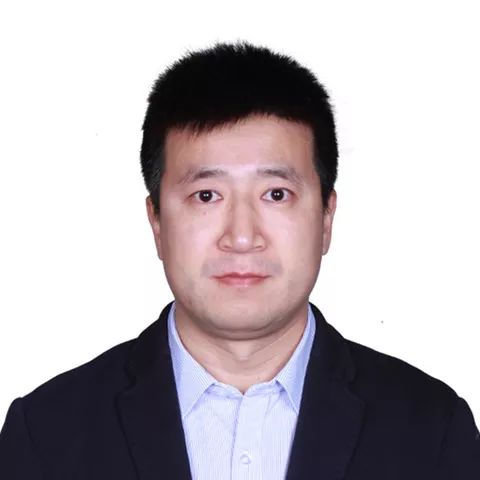科技工作者之家
科技工作者之家APP是专注科技人才,知识分享与人才交流的服务平台。
科技工作者之家 2019-07-15
来源:中科院半导体所
单层二硒化钨中单缺陷光子和手性声子的量子纠缠效应在最新出版的《半导体学报》2019年第7期上,来自于中国科学院半导体研究所的张俊教授着重介绍了单层二维层状半导体二硒化钨中单个缺陷光子和手性声子的量子纠缠效应,指出这一新的发现将对于实现声子态为媒介的俩个量子态纠缠以及研究单声子源具有重要的意义。
Entanglement is a defining feature of quantum physics with no classical analog. On the one hand, it is a powerful concept used in the fundamental study of quantum systems, many-body physics and even black hole physics. On the other hand, it is a key resource in quantum communication and information processing. Entanglement has been realized between photons[1], ions[2], spins[3], quantum dots[4] and even larger objects such as macroscopic diamonds[5]. Entanglement involving macroscopic objects is particularly intriguing and holds promise for novel quantum technologies. In a recent paper[6] published in Nature Physics, Srivastava and co-workers have unveiled an intriguing entanglement between collective and macroscopic vibration involving billions of atoms of the crystal (phonon) and a single optical excitation of a quantum dot (QD) in monolayer WSe2 (Fig. 1(a)). This is the first report on single photon entangled with phonon.

Figure 1. Phonon-photon interaction in monolayer WSe2. (a) Optical image of the monolayer WSe2 FET device. (b) Schematic of phonon-photon entanglement. The circularly polarized states (σ–/σ+) with angular momentum of l = –1/+1 are degenerate in WSe2. The σ–(σ+) photon state can only couple with l = +1 (–1) phonon and scatter to σ+(σ–) state due to conservation of angular momentum. The indistinguishability of the two paths leads to phonon-photon entanglement. (c, d) Polarization of QDs and their phonon replicas. D3a doublets are linearly polarized and orthogonal to each other, as expected from a localized neutral exciton. D3b doublets, the phonon replica of D3a, do not show any dependence on collection polarization, indicating that D3b are unpolarized. The lost of polarization information from parent peaks to phonon replicas is a result of phonon–photon entanglement.
According to Lu and Chen, who were directly involved in the study, the use of WSe2 monolayer with its underlying honeycomb lattice was crucial due to the presence of degenerate chiral phonons which carry pseudo-angular momenta. Moreover, neutral quantum dot in WSe2 exhibit two linearly polarized emission peaks which can be considered as superposition of circularly polarized valley excitons, mixed due to electron-hole exchange interaction. Owing to conservation of angular momentum, in a photon scattering process, the chiral phonon with pseudo-angular momentum l = –1 (+1) phonon can only couple with the σ+ (σ–) state of the single photon emitted by a neutral quantum dot. Due to strong electron-phonon coupling in WSe2, the authors observed strong phonon replica of the parent neutral quantum dot emission peak which is red-shifted by exactly the energy of a single chiral phonon. As shown in Fig. 1(b), there are two indistinguishable paths by which this replica photon can be emitted, leading to scattering into σ–/σ+ states. As a result, after the scattering process, the state of photon and phonon system is described by an entangled state. Unlike the linearly polarized emission of the parent peak, the polarization of the phonon replica is completely unpolarized as confirmed by both linear and circular basis measurements (Fig. 1(d)). This randomization of polarization is completely unexpected for a coherent Raman-like phonon emission and occurs due to the fact that in their measurement the information about the phonon part of the entangled state is not recovered and as a result, the polarization information of the photon is also lost.
To further confirm this behaviour, the two paths are made distinguishable by lifting the degeneracy of the circularly polarized photon states by applying a small magnetic field in what can be considered as a valley analogue of the Zeeman effect. Indeed the authors observed a recovery of polarization in agreement with the entanglement scheme and also rule out other mechanisms such as the phonon polarization being oriented in arbitrary directions during the emission events.
This novel finding could open up novel possibilities for entangling two distant quantum emitters via a single chiral phonon. The chiral coupling can also be utilized to manipulate the quantum state of the collective excitation (phonon) by an all-optical control of the QD, possibly leading to non-classical states of phonons. The chiral nature of phonons can also be exploited for non-reciprocal propagation of energy and information at single quantum level. This result also provides a new source of single phonons which benefits from the strong single exciton–phonon coupling in the QDs of two-dimensional materials.
References
[1] Aspect A, Grangier P, Roger G. Experimental realization of Einstein-Podolsky-Rosen-Bohm Gedanken experiment — A new violation of Bell inequalitites. Phys Rev Lett, 1982, 49, 91
[2] Blatt R, Wineland D. Entangled states of trapped atomic ions. Nature, 2008, 453, 1008
[3] Neumann P, Mizuochi N, Rempp F, et al. Multipartite entanglement among single spins in diamond. Science, 2008, 320, 1326
[4] Shulman M D, Dial O E, Harvey S P, et al. Demonstration of entanglement of electrostatically coupled singlet-triplet qubits. Science, 2012, 336, 202
[5] Lee K C, Sprague M R, Sussman B J, et al. Entangling macroscopic diamonds at room temperature. Science, 2011, 334, 1253
[6] Chen X, Lu X, Dubey S, et al. Entanglement of single-photons and chiral phonons in atomically thin WSe2. Nat Phys, 2018, 15, 221

张俊教授文章:
Single photon-chiral phonon entanglement in monolayer WSe2
Jun Zhang
J. Semicond. 2019, 40(7), 070404
doi: 10.1088/1674-4926/40/7/070404
来源:bdtdsj 中科院半导体所
原文链接:http://mp.weixin.qq.com/s?__biz=MzI1OTExNzkzNw==&mid=2650449220&idx=2&sn=d2578a698a3c96a765b5902b41ab7500&chksm=f273c35ac5044a4ce838c448fa03ae7598bd84954f223d2d4b346e86302852dfa15e87f5456a&scene=27#wechat_redirect
版权声明:除非特别注明,本站所载内容来源于互联网、微信公众号等公开渠道,不代表本站观点,仅供参考、交流、公益传播之目的。转载的稿件版权归原作者或机构所有,如有侵权,请联系删除。
电话:(010)86409582
邮箱:kejie@scimall.org.cn

肉眼可见的量子纠缠首次实现
什么是量子纠缠?

科学家利用两颗类星体进一步验证了量子纠缠理论

量子纠缠真的很怪异吗?

量子针灸?只是另一种“扎小人诅咒”罢了

科学家在几乎肉眼可见的物体中实现量子纠缠

实现“按需”生成量子纠缠态 荷兰或建首个量子互联网
首张量子纠缠图像问世

2017年度中国科学十大进展揭晓,“量子纠缠”位列榜首

“量子纠缠”原子数量再创纪录